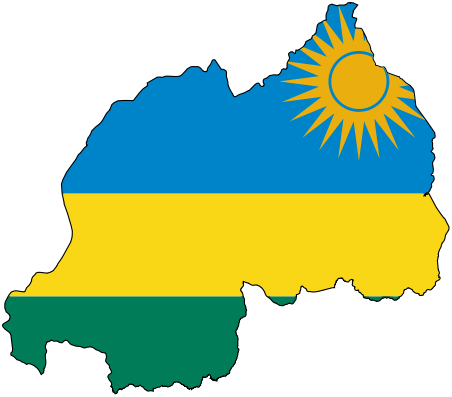Notice of Intent:Hydrologic Assessment of Grand Canyon NPâ¿¿s source Water and associated groundwater monitoring and modeling
As Grand Canyon National Park begins the process of upgrading the parks water supply and delivery infrastructure, it is critical that we develop a better understanding of the quantity, quality, and vulnerability of water resources.
Currently, our understanding of the overall source water area for the park water supply (Roaring Springs) is poorly defined and needs to be evaluated.
This study should help us improve our understanding of the surface area on the Kaibab Plateau that drains through springs associated with Bright Angel Creek.
With this information, we will be better able to assess the available water supply, especially in light of climate change, and how vulnerable the water supply is to contamination.
The intent of the proposed project is to delineate the source water area for Bright Angel Creek using dye tracing and spring monitoring techniques (for dye trace methods Jones et al.
in review.
For spring monitoring protocols see springstewardshipinstitute.org and Graham Schindelâ¿¿s 2015 NAU masterâ¿¿s thesis).
Current monitoring efforts of springs in Grand Canyon provide some insight into the behavior of aquifers showing that water during spring snow melt typically takes less than 2 weeks to reach the Roaring Springs system.
This type of information allows us to understand the relationship between precipitation, aquifer storage, and spring flow.
However, our data are limited and without a solid understanding of the surface area directly related to all springs feeding Bright Angel Creek, we cannot estimate the future water yield from these aquifer systems with any certainty.
Additionally, these springs are the outlet of karst aquifers.
Karst aquifers are defined by caves, sinkholes, and bedrock that easily dissolve by slightly acidic waters.
Due to the nature of these systems, water can move rapidly through these systems, often as fast as a surface stream making them vulnerable to contamination from surface activities that feeds into the aquifer.
Without delineating the surface area associated with the springs, it is impossible to accurately determine potential sources of contamination that could impact these spring and stream ecosystems and the parkâ¿¿s water supply.
Currently, our understanding of the overall source water area for the park water supply (Roaring Springs) is poorly defined and needs to be evaluated.
This study should help us improve our understanding of the surface area on the Kaibab Plateau that drains through springs associated with Bright Angel Creek.
With this information, we will be better able to assess the available water supply, especially in light of climate change, and how vulnerable the water supply is to contamination.
The intent of the proposed project is to delineate the source water area for Bright Angel Creek using dye tracing and spring monitoring techniques (for dye trace methods Jones et al.
in review.
For spring monitoring protocols see springstewardshipinstitute.org and Graham Schindelâ¿¿s 2015 NAU masterâ¿¿s thesis).
Current monitoring efforts of springs in Grand Canyon provide some insight into the behavior of aquifers showing that water during spring snow melt typically takes less than 2 weeks to reach the Roaring Springs system.
This type of information allows us to understand the relationship between precipitation, aquifer storage, and spring flow.
However, our data are limited and without a solid understanding of the surface area directly related to all springs feeding Bright Angel Creek, we cannot estimate the future water yield from these aquifer systems with any certainty.
Additionally, these springs are the outlet of karst aquifers.
Karst aquifers are defined by caves, sinkholes, and bedrock that easily dissolve by slightly acidic waters.
Due to the nature of these systems, water can move rapidly through these systems, often as fast as a surface stream making them vulnerable to contamination from surface activities that feeds into the aquifer.
Without delineating the surface area associated with the springs, it is impossible to accurately determine potential sources of contamination that could impact these spring and stream ecosystems and the parkâ¿¿s water supply.
Related Programs
Cooperative Research and Training Programs Resources of the National Park System
Department of the InteriorObtain Full Opportunity Text:
Office of Postsecondary Education (OPE): American Overseas Research Centers (AORC) Program CFDA Number 84.274A;
Additional Information of Eligibility:
Eligible Applicants: Consortia of United States institutions of higher education that receive more than 50 percent of their funding from public or private United States sources, have a permanent presence in the country in which the center is located, and are organizations described in section 501(c)(3) of the Internal Revenue Code of 1986, which are exempt from taxation under section 501(a) of such code.
Full Opportunity Web Address:
https://www.gpo.gov/fdsys/pkg/FR-2016-06-20/pdf/2016-14528.pdf
Contact:
Julius CottonED Grants.gov FIND Systems Admin.Phone 202-245-6288EducationGrantInquiries@ed.govProgram Manager:Cheryl E. Gibbs, U.S. Department of Education, 400 Maryland Avenue SW., Room 3E245, Washington, DC 20202-4260. Telephone: (202) 453-5690
Agency Email Description:
e-Mail: Program Manager
Agency Email:
cheryl.gibbs@ed.gov
Date Posted:
2017-02-21
Application Due Date:
2017-03-02
Archive Date:
2017-03-13
Social Entrepreneurship
Spotlight
Rwanda as Social Entrepreneur Fund Beneficiary

The Republic of Rwanda has been picked as one of the six African countries as beneficiaries for a new fellowship fund program designed at supporting social entrepreneurs in tackling issues on food security.





